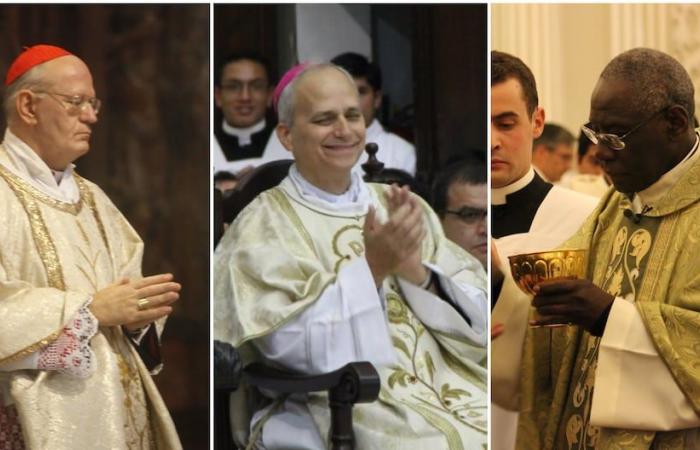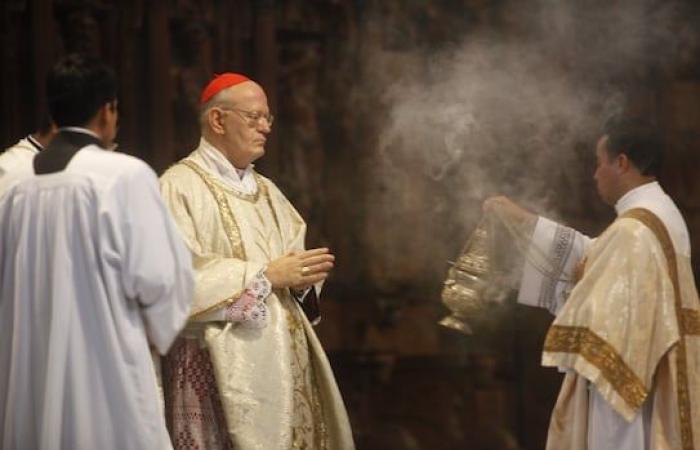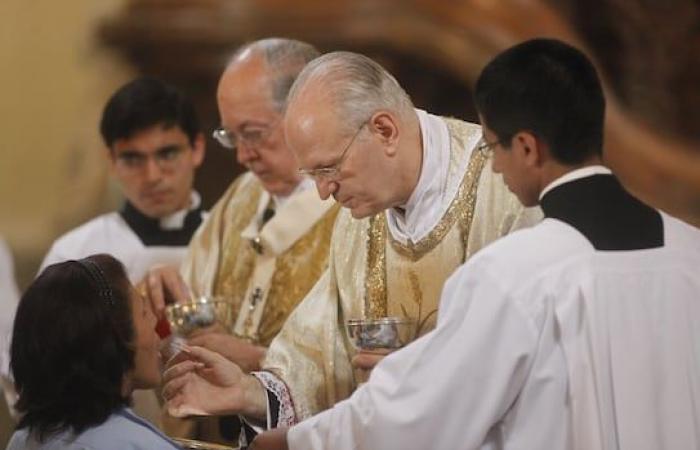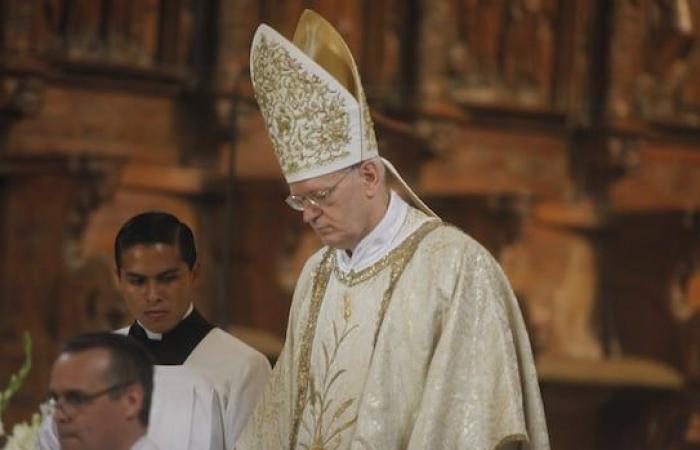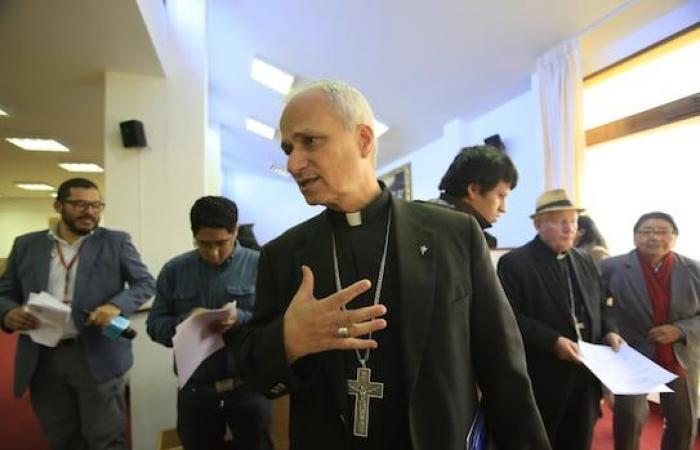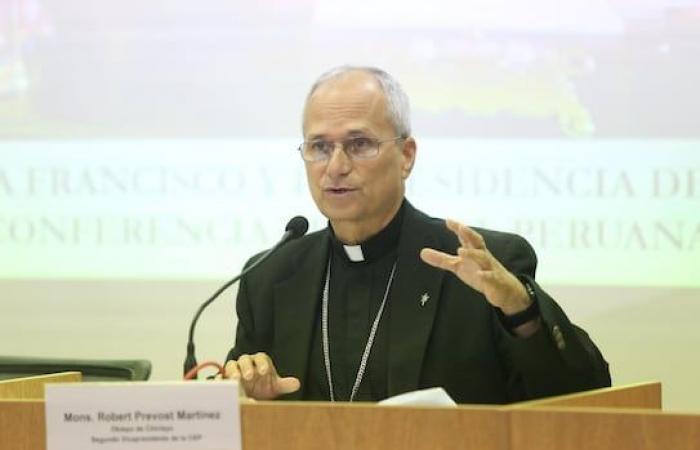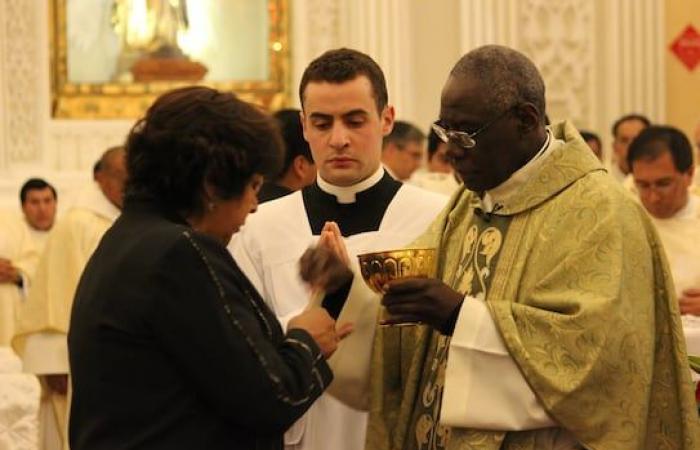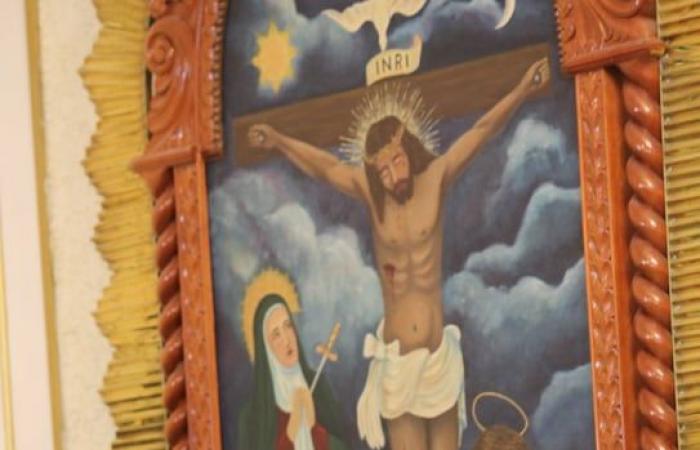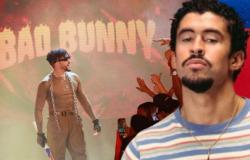MIRA: 5 things that you might not know about the Sistine Chapel, headquarters of the conclave to choose the new Pope
Unlike any other choice, that of the Vicar of Christ does not have official surveys or campaigns. However, the most tanned international and Vatican media often armed lists with the names that resonate as favorites among the halls of the Holy See.
It is currently pointed out that some 15 cardinals appear as “papable.” Two of them had a step through Peru, while a third party exercised an important position in the north of our country, even becoming a Peruvian citizen.
“Apostolic visitor—
After about five years of tensions between the Pontifical Catholic University of Peru (PUCP) and the then cardinal of Lima Juan Luis Cipriani, in December 2011, Pope Benedict XVI appointed Cardinal Hungarian Péter Erdö as an apostolic visitor in an effort to reach a diplomatic solution.
during the week that his visit lasted, from December 4 to 11, Erdö met with representatives of the University, the Archbishopric of Lima, other members of the Church and the academic world; He also celebrated a Mass in the Lima Cathedral for the feast of the Immaculate Conception and finally prepared a confidential report that resulted in an ultimatum issued by the Vatican in 2012.
Currently, Cardinal Hungarian is voiced as one of the most supporting candidates within the most moderate wing of the Church thanks to his distinguished career. Erdö is characterized by having an outstanding academic profile and his domain of seven languages, reasons why Francisco would have chosen him as general rapporteur of the third extraordinary general assembly of the Synod of the Bishops and, subsequently, as the rapporteur of the Synods on the family in 2014 and 2015.
However, it has also been criticized for its proximity to the government of the ultra -nationalist Viktor Orbán and its silence before complaints for violations of the rights of the current Hungarian government.
1
Erdö arrived in Peru in December 2011 as an apostolic visitor.
2
Pope Benedict XVI sent the Hungarian Cardinal with the intention of finding a diplomatic solution to the problem that the PUCP and the Archbishopric of Lima maintained.
3
During his visit, Erdö Cocoebró a Mass in the Cathedral of Lima for the feast of the Immaculate Conception.
4
He is currently considered one of the most supporting candidates among the group of conservatives of the Catholic Church.
—The Peruvian cardinal—
Robert Prevost was born in Chicago in 1955 and began his religious life in 1977. He was ordered priest in 1982 and three years later he was sent in his first mission to Chulucanas, in Piura, without imagining that this would be just the beginning in his relationship with Peru.
After comings and turns between his hometown and our country over the years, in 2014 Pope Francis appointed him Apostolic Administrator of the Diocese of Chiclayo. From that position, and in commitment to the country, he announced that Peruvian would be nationalized. That same year he obtained his ID, which allowed him to be consecrated as bishop of the city the following year.
His management stood out for the proximity that he maintained with the faithful and the impulse of innovative projects; However, a complaint for child sexual abuse made public in December 2023 against the priest Eleuterio Vásquez Gonzales, overshadows his passage through the Peruvian north. According to the complainant, Prevost was still a bishop of Chiclayo when he received the complaint in April 2022, the same that ended up being filed.
In 2023 Prevost was created Cardinal by Pope Francis and appointed prefect of the Dicasterio for the bishops, one of the most influential organisms of the Vatican.
1
Robert Prevost was appointed Apostolic Administrator of the Diocese of Chiclayo in 2014 by Pope Francis.
2
That same year he obtained Peruvian nationality, which allowed him to be consecrated as a bishop of the city in 2015.
3
His management stood out for the proximity he had with the faithful and the impulse of innovative projects, but ended up tarnished by a complaint of child sexual abuse by a priest of his diocese.
– Social impact vista—
In June 2013, Cardinal Guineano Robert Sarah visited the city of Arequipa to preside over the annual meeting of the Populorum Progressio Foundation Board.
During his four -day visit, Sarah could not only evaluate more than 200 social development projects in Latin America and visit vulnerable populations in the city, but also presided over a mass in the Arequipa Cathedral on June 18, transmitting the greeting of Pope Francis to his parishioners.
Sarah is a serious representative of the traditional values of the Church and on more than one occasion he has been against the reforms promoted by Francisco during his papacy. Among his most controversial statements, the Guinean orthodox has described as “satanic” and “demonic” to “gender ideology.”
In addition, he has shown a radically opposite position to Francisco’s role in the role of the church against migration, while the Argentine invited European governments to open their borders, the purple Guinean said in 2019 that from the Holy See they should not “collaborate in this new form of slavery that has become mass immigration“.
1
In June 2013, Cardinal Guinean Robert Sarah visited the city of Arequipa.
2
The Purpsed prison the annual meeting of the Board of Directors of the Populorum Progressio Foundation.
3
In addition, he celebrated a Mass in the Arequipa Cathedral on June 18, transmitting the greeting of Pope Francis to his parishioners.
The list of Candidatos is completed Pietro Parolin, Matteo Maria Zuppi, Luis Antonio Tagle, Jean Marc Aveline, Pierbattista Pizzaballa, Anders Aborelius, Mario Grech, Fridolin Ambongo Besungu, Jean-Claude Hollerich, Peter Turkson, Charles Bo Y Malcolm Ranjith.
“One of the potato candidates spoke with the commerce.”

As in 2013, Cardinal Turkson appears as one of the main candidates to assume as Vicar of Christ.
On July 25, 2015, Commerce He had as a figure on his postdata page Cardinal Ghanés Peter Turksson in an interview conducted by Ismael Monzón.
In the conversation they held in Rome, the purple that had been one of the favorites to succeed Benedict XVI in office spoke about his role in the drafting of the encyclical “Laudato Si”, the criticisms of the vision of Pope Francis about the future of the Catholic Church and the possibility that the papacy be assumed by a cardinal of Africa or another historically little represented region.
Next, we remember the full interview.
When Benedict XVI announced his resignation, Cardinal Ghanés became the favorite of bets to replace him. Even 25% of Peruvians, according to Ipsos, thought the new Pope would be African. It was not, but Turkson maintained its relevance.
Peter Kodwo Appiah Turkson was born 66 years ago in Nsuta Wassaw, an village at almost 500 kilometers from Accra, the capital of Ghana. He grew up in a humble family, like the fourth of ten brothers, until when he turned 13 he entered a seminar in a nearby town. It turned out to be so brilliant that he was sent to New York to finish his studies and, before settling in Rome, he worked as a professor in his country.
The cardinal dominates six languages and, after the resignation of Benedict XVI, his name was one of those who sounded with more force to occupy the throne of San Pedro, Turkson presents himself to the interview in short manga and with sandals. Leave the keys of his private car on the table, which he has just parking, and warns that he has no more than 15 minutes, although later he immerses himself in a conversation three times longer.
As president of the Pontifical Council Justice and Peace, his latest service has been the coordination of the works for the drafting of the encyclical “Laudato Si”, with which Pope Francis has again stirred the foundations of the Church. A merely functional work for Cardinal Ghanaés.
-Why did the Pope choose you to coordinate the works on the encyclical “Laudato Si” and explain it to world leaders as Ban Ki-Moon?
It is a matter of competences. In the Justice and Peace Council, we take care of issues such as poverty, economy, climate change and the environment. The Pope did not want the committee to depend solely on Italy or the Catholic Church, so we contacted an Italian expert, a German, an American and an Irishman, some of the best in their field. What I did was only coordinate those works to write the draft.
“It is, however, a great responsibility.” How much of you are in the final work?
The Pope gave us a first outline in early July. In almost a year, many people have had the opportunity to advise him and there have been many changes. It has nothing to do with me, the important thing is what the Pope tells us.
“Are we facing the cornerstone of Pope Francis’s thought?”
There are ideas that are in the center of Francisco’s ideology, such as the concern for the excluded or the vision of the environment. We can say that the encyclical clearly summarizes its vision of humanity and its relationship with its context. John Paul II and Benedict XVI have already put the human being at the center of their concerns, although perhaps this is one of the greatest contributions to the problems of humanity since the Second Vatican Council.
“Have there been more criticism since your publication?”
Criticisms focus on their opinions on climate change and their economic and social ideas, but in reality the encyclical is something else. To define the relationship between the human being and its environment, it is necessary to cite global warming and the predominant economic system. Faced with such a topic, there had to be criticism. But in general, the encyclical has received very positive reactions from world leaders, who value the Pope as a great moral reference.
—During his recent trip to Latin America, Bergoglio emphasized this message and some qualify him as a Marxist.
These accusations come from before, just because the Pope has shown his concern about the poor and unemployed. If they call me Marxist, I will be delighted, because Marxism knows the Bible very well. The Pope has never said that it is Marxist: his concern is always in those displaced. His basis of thought is in the Bible and his goal is to convey those teachings.
“Do you think the Pope is trying to rebuild the Church?”
I think he is trying to lead the church in the direction in which he believes, what he calls the church of the poor and for the poor.
“The Pope focuses his message on the periphery.” Is the forgotten continent still Africa?
From the point of view of the Church, Africa has never been forgotten. One of the most important Vatican offices, the propagation of faith, has Africa at the top of its list. The Vatican allocates much of its budget to extend its influence, build churches, etc. For Western countries, Africa has never been forgotten, but have always tried to use it for their own benefit. It is the great failure of humanity at the fraternity level.
“Is it just the responsibility of the West?” What is needed for the development of the African continent?
No, Africa despises the great talents. Effective work, excellence and African leaders who assume their responsibility are needed. India achieved independence almost at the same time as many African countries, but to us – contrary to them – we lacked visionaries.
“Will we a black Pope in this century?”
Don’t know. We can only ask him [señala arriba]. If the Church chooses me, it is already known what can happen, but it does not depend on me. When Benedict resigned, nobody expected someone from Latin America. Nothing is impossible.

